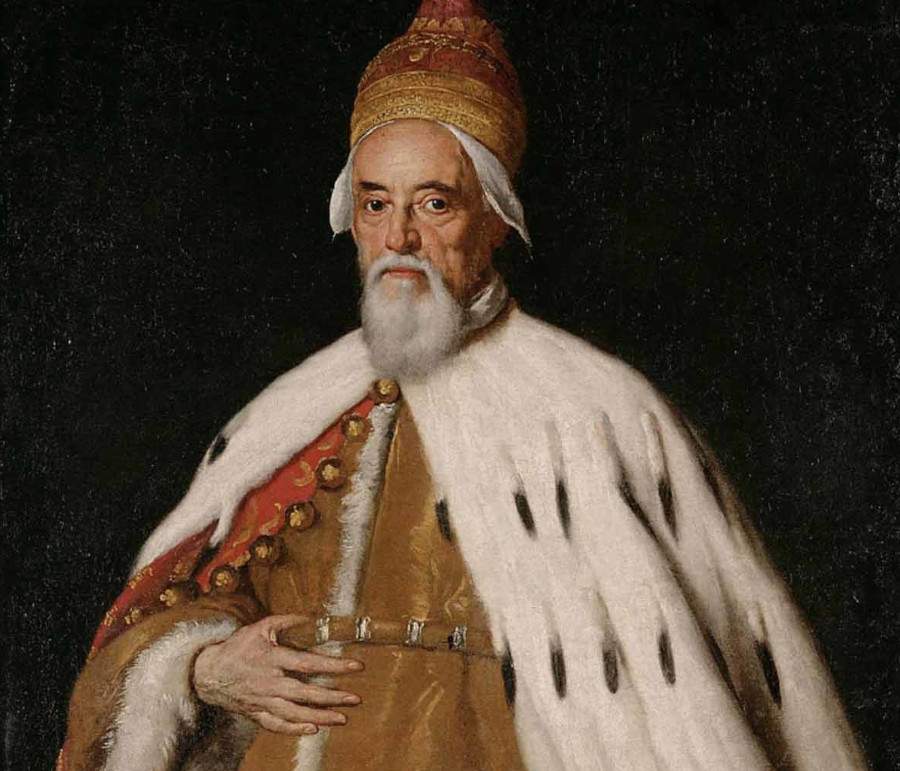Arriving from the Kunsthistorisches Museum in Vienna is the famous Portrait of Doge Francesco Erizzo, a masterpiece by Bernardo Strozzi, which will be on display at the Civic Museum of Santa Caterina in Treviso from November 19, 2021 to February 13, 2022.
"The project A Masterpiece for Treviso," emphasizes Civic Museums director Fabrizio Malachin, "is one of the fruits of the network of connections that the Civic Museums of Treviso are weaving with major European museums. Strozzi’s masterpiece comes to Treviso from the Kunsthistorisches following the loan to the Viennese museum of Titian’s Portrait of Sperone Speroni."
"Francesco Erizzo was the doge of the economic and artistic restart of Venice after the great plague of 1630,“ explain Mario Conte, mayor of Treviso, and councillor Lavinia Colonna Preti. ”He was elected on the first ballot practically unanimously, confirming a decidedly rare and undisputed popularity and approval, destined never to fail. The period of his dogado was among the most fortunate and happy in Venice, with the very strong recovery, after the drama of the epidemic, of economic, artistic and recreational activities. His figure remained a recognized symbol of social harmony and the state. The presence of ’a doge in Treviso’ is also a tribute to the 1,600th anniversary of the founding of the city of Venice."
The Portrait of Francesco Erizzo by Bernardo Strozzi allows the enhancement of one of the most significant sections of the civic collections: more than fifty portraits with works by Lorenzo Lotto, Titian, Tintoretto, and Palma il Giovane. The doge thus finds his place of honor in the portrait gallery among other prominent figures, works some of which are usually kept in storage as senators, procurators, and officers.
Bernardo Strozzi represents Doge Erizzo in his third age. Sergio Marinelli, who has long studied the work, points out how in the painting the doge’s status is wonderfully evidenced by his dress, almost a “uniform,” naturally sumptuous, with precious fabrics and colors of red, the white of ermine, and golden yellow, juxtaposed almost as a counterpoint to the serene and detached features of his face, caught in the weariness of his old age.
The surprise of the discovery of the painterly quality of this masterpiece of portraiture is already in the words of Giuseppe Fiocco, who wrote in 1922, “The portrait must have been a triumph and is certainly for us also one of the most admirable paintings of the time; worthy of a Vélazquez for the severity of the expression and the wisdom of the flowing and constructive touch.”
There is a less intense variant of the painting preserved in the Gallerie dell’Accademia in Venice, while several copies and variants have appeared on the antiques market.
The Genoese Strozzi was a Capuchin friar and successful artist. He was tried and convicted of apostasy, forced to don the habit, and imprisoned for eighteen months between prison and convent before regaining his freedom thanks to the successful outcome of yet another escape attempt. It was Doge Erizzo in the Serenissima who accepted his plea and set him free once again to express his artistic abilities. In his new homeland, Strozzi completed the ceiling decoration of the Biblioteca Marciana, but he excelled above all as a portraitist.
Besides the portrait of Doge Erizzo, he made those of Cardinal Federico Corner and Bishop Alvise Grimani. Fabrizio Malachin, also referring to ancient sources, says of him that “for pure pictorial talent, he certainly had few who could equal him, none to surpass him. To the Caravaggesque echoes of his beginnings, he knew how to combine in personal style the luminosity of Paolo Veronese and the colorism of Rubens, with the sensual portraiture of Antoon van Dyck.”
“The event also anticipates the forthcoming publication of the third volume of the museums’ scientific catalog devoted precisely to the seventeenth and eighteenth centuries. A commitment that the institute is pursuing thanks to the collaboration of the Friends of Museums and Monuments of Treviso, and numerous scholars,” Malachin concludes.
For more info: www.museicivicitreviso.it
Image: Bernardo Strozzi, Portrait of Doge Francesco Erizzo (c. 1631; oil on canvas, 103 x 125 cm; Vienna, Kunsthistorisches Museum)
 |
| Bernardo Strozzi masterpiece arrives in Treviso from Vienna's Kunsthistorisches Museum |
Warning: the translation into English of the original Italian article was created using automatic tools. We undertake to review all articles, but we do not guarantee the total absence of inaccuracies in the translation due to the program. You can find the original by clicking on the ITA button. If you find any mistake,please contact us.